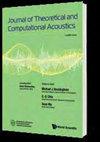Update on the Ivory-billed Woodpecker (Campephilus principalis) Scandal
IF 1
3区 物理与天体物理
Q3 ACOUSTICS
Journal of Theoretical and Computational Acoustics
Pub Date : 2023-11-28
DOI:10.1142/s2591728523500214
引用次数: 0
Abstract
The Ivory-billed Woodpecker (Campephilus principalis) is an elusive bird that has repeatedly been feared extinct only to be rediscovered during the past hundred years. The most recent rediscovery, which took place in Arkansas, was announced in an article that was featured on the cover of Science in 2005. Despite published reports of sightings in Florida and Louisiana in the years that followed, the issue became controversial when nobody managed to obtain a clear photo and critics attacked relatively weak video evidence that was presented in the original article. The issue began to develop into a science scandal when the critics used specious arguments to delay the publication of the strongest evidence, which consists of three videos that were obtained during encounters with birds that were identified in the field as Ivory-billed Woodpeckers and that show field marks, body proportions, flights, and other behaviors that are consistent with that species but no other species of the region. The scandal culminated in a decision by the U.S. Fish & Wildlife Service to declare the species extinct in 2021, which was made without addressing the strongest evidence. An update is given here on recent developments. The decision to declare the species extinct was based on a five-year review of evidence for persistence. During an interview, it came to light that the person who performed the review was unaware of basic facts about the strongest evidence. Evidence that was obtained at another site in Louisiana [Latta et al., “Multiple lines of evidence suggest the persistence of the Ivory-billed Woodpecker (Campephilus principalis) in Louisiana,” Ecology and Evolution (2023)] is discussed and compared with the strongest evidence. Videos obtained with a drone on a sunny day often show white markings that do not correspond to actual field marks. It is demonstrated that a video that was purported to show an Ivory-billed Woodpecker on the basis of apparent white markings is apparently a Pileated Woodpecker (Dryocopus pileatus). The bird in that video appears to have black trailing edges on the dorsal surfaces of the wings, which are consistent with the Pileated Woodpecker, not the Ivory-billed Woodpecker. The wingbeat frequency and an upward swooping landing also seem to be consistent with the Pileated Woodpecker but are not consistent with historical accounts of the Ivory-billed Woodpecker or flights appearing in videos that contain the strongest evidence.象牙嘴啄木鸟(Campephilus principalis)丑闻的最新进展
象牙嘴啄木鸟(Campephilus principalis)是一种难以捉摸的鸟类,人们曾多次担心它已经灭绝,但在过去的一百年中又被重新发现。最近一次重新发现发生在阿肯色州,2005 年《科学》杂志封面刊登了一篇文章宣布了这一消息。尽管在随后的几年里,佛罗里达州和路易斯安那州都有目击报告,但由于没有人能够获得清晰的照片,批评者又对原始文章中相对薄弱的视频证据进行了攻击,因此这一问题变得颇具争议。批评者使用似是而非的论据拖延公布最有力的证据,而这些证据包括三段视频,这些视频是在与鸟类相遇时获得的,鸟类在现场被确认为象牙嘴啄木鸟,视频显示的现场痕迹、身体比例、飞行和其他行为与该物种相符,但与该地区的其他物种不符。这起丑闻最终导致美国鱼类和野生动物管理局在没有找到最有力证据的情况下,决定宣布该物种于 2021 年灭绝。在此提供最新进展情况。宣布该物种灭绝的决定是基于对其持续存在证据的五年审查。在一次访谈中,人们发现进行审查的人并不知道关于最有力证据的基本事实。本文讨论了在路易斯安那州另一个地点获得的证据[Latta 等人,"多重证据表明象牙嘴啄木鸟(Campephilus principalis)在路易斯安那州持续存在",《生态学与进化》(2023 年)],并将其与最有力的证据进行了比较。在阳光明媚的日子用无人机拍摄的视频通常会显示与实际野外痕迹不符的白色标记。研究表明,一段根据明显的白色斑纹被认为是象牙喙啄木鸟的视频显然是啄木鸟(Dryocopus pileatus)的视频。视频中的啄木鸟翅膀背面似乎有黑色的拖尾,这与啄木鸟相符,而不是象牙嘴啄木鸟。啄木鸟的拍翅频率和向上俯冲的着陆方式似乎也与啄木鸟相符,但与历史上关于象牙嘴啄木鸟的描述或视频中出现的飞行方式并不一致,而这些都是最有力的证据。
本文章由计算机程序翻译,如有差异,请以英文原文为准。
求助全文
约1分钟内获得全文
求助全文
来源期刊

Journal of Theoretical and Computational Acoustics
Computer Science-Computer Science Applications
CiteScore
2.90
自引率
42.10%
发文量
26
期刊介绍:
The aim of this journal is to provide an international forum for the dissemination of the state-of-the-art information in the field of Computational Acoustics.
Topics covered by this journal include research and tutorial contributions in OCEAN ACOUSTICS (a subject of active research in relation with sonar detection and the design of noiseless ships), SEISMO-ACOUSTICS (of concern to earthquake science and engineering, and also to those doing underground prospection like searching for petroleum), AEROACOUSTICS (which includes the analysis of noise created by aircraft), COMPUTATIONAL METHODS, and SUPERCOMPUTING. In addition to the traditional issues and problems in computational methods, the journal also considers theoretical research acoustics papers which lead to large-scale scientific computations.
 求助内容:
求助内容: 应助结果提醒方式:
应助结果提醒方式:


